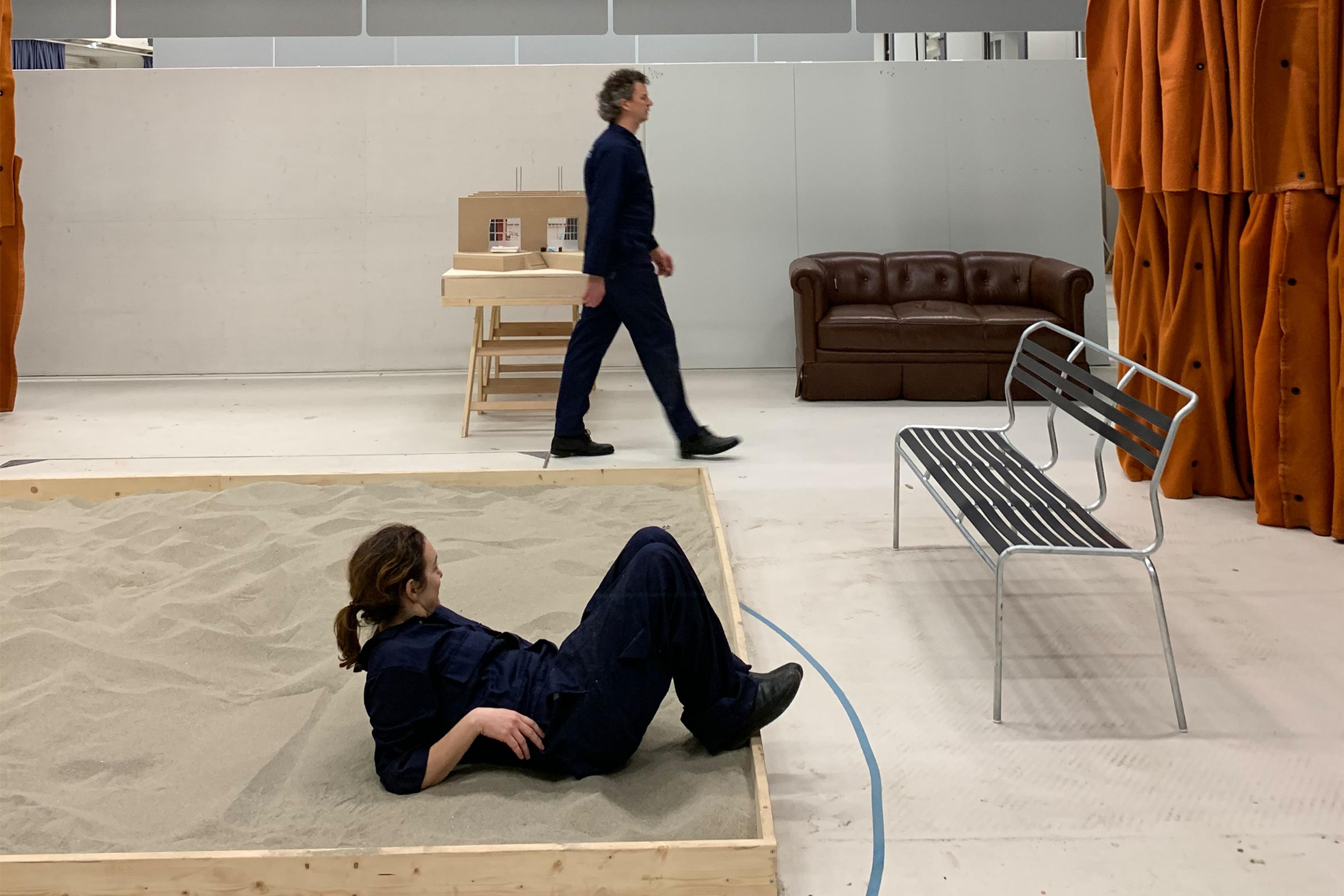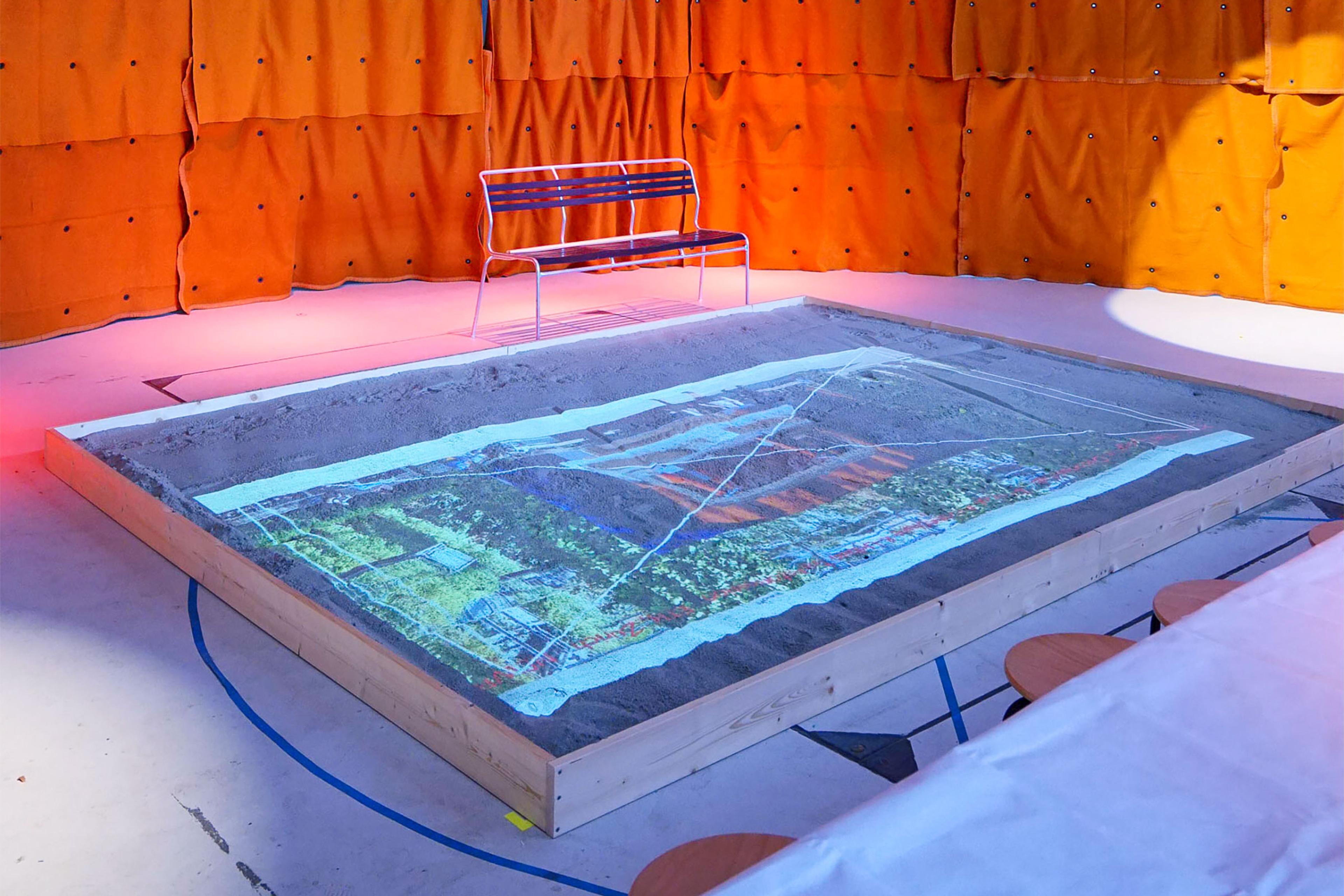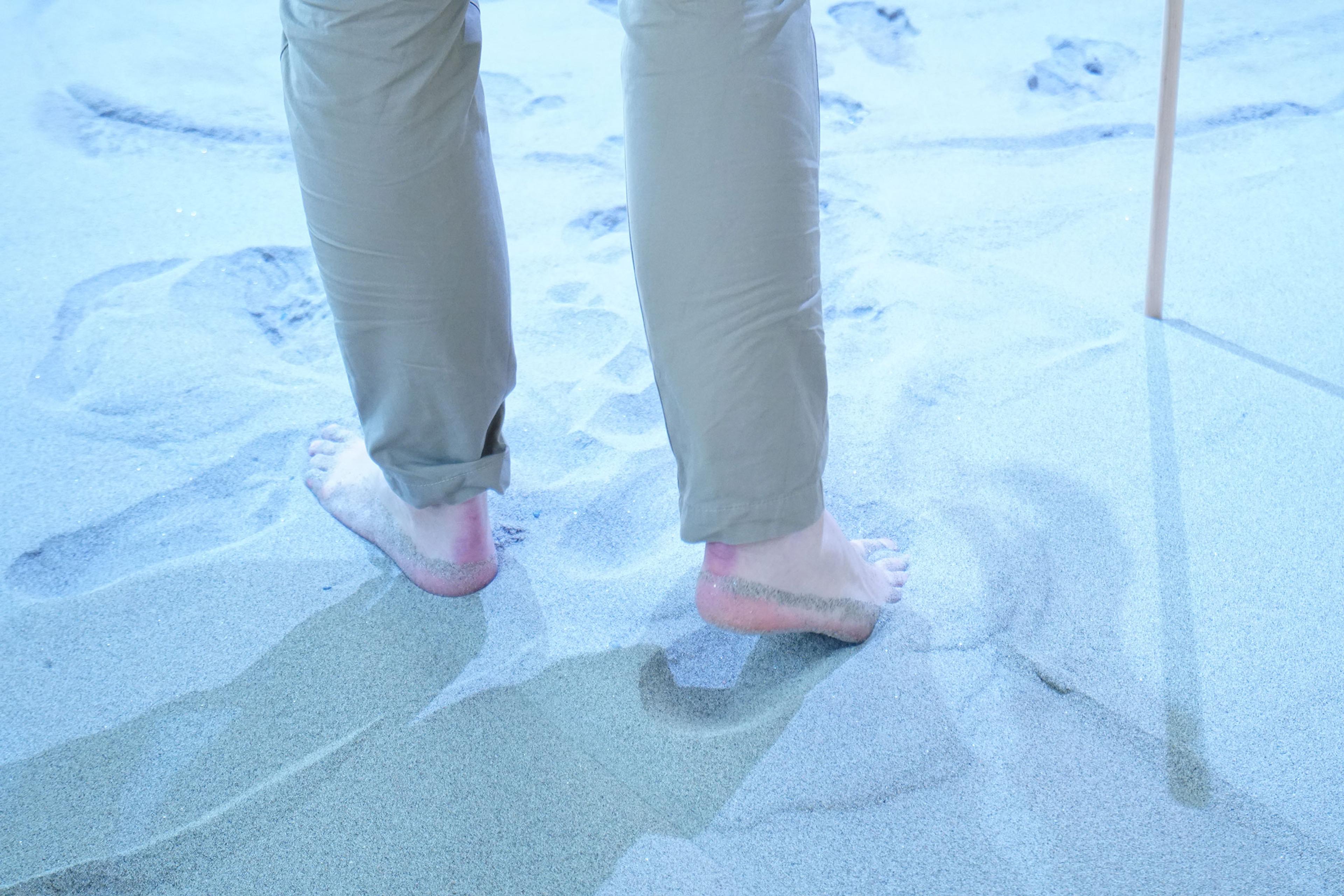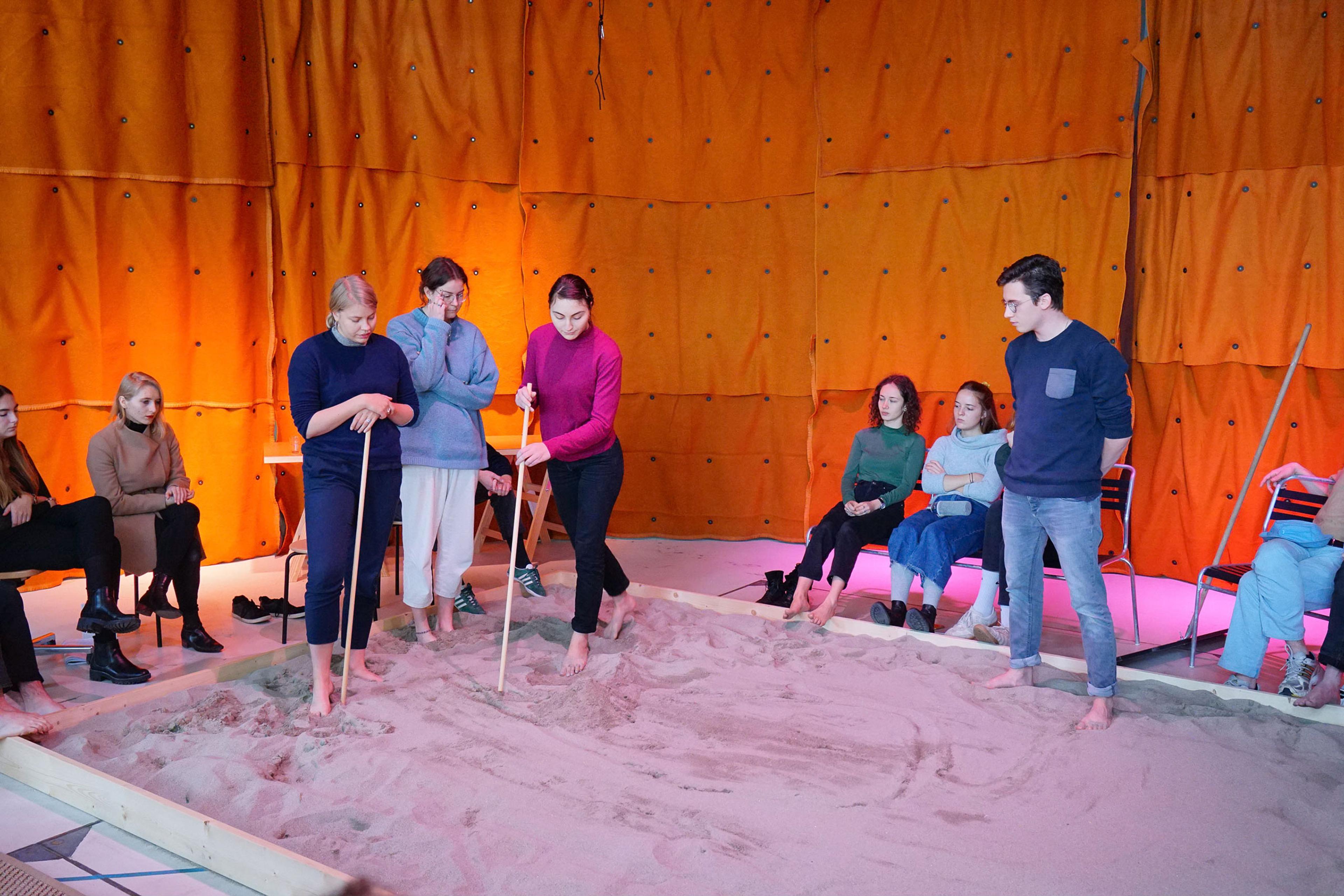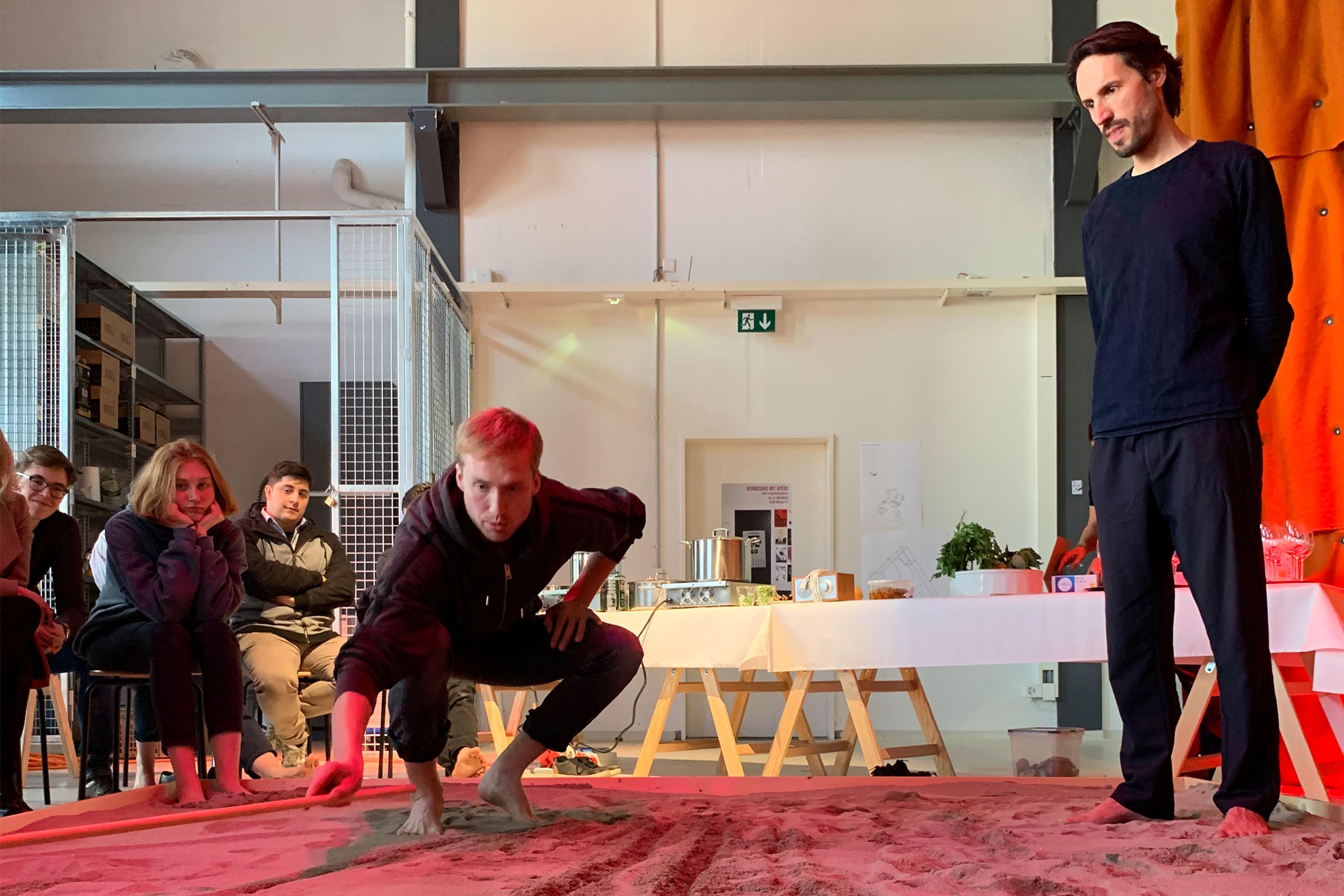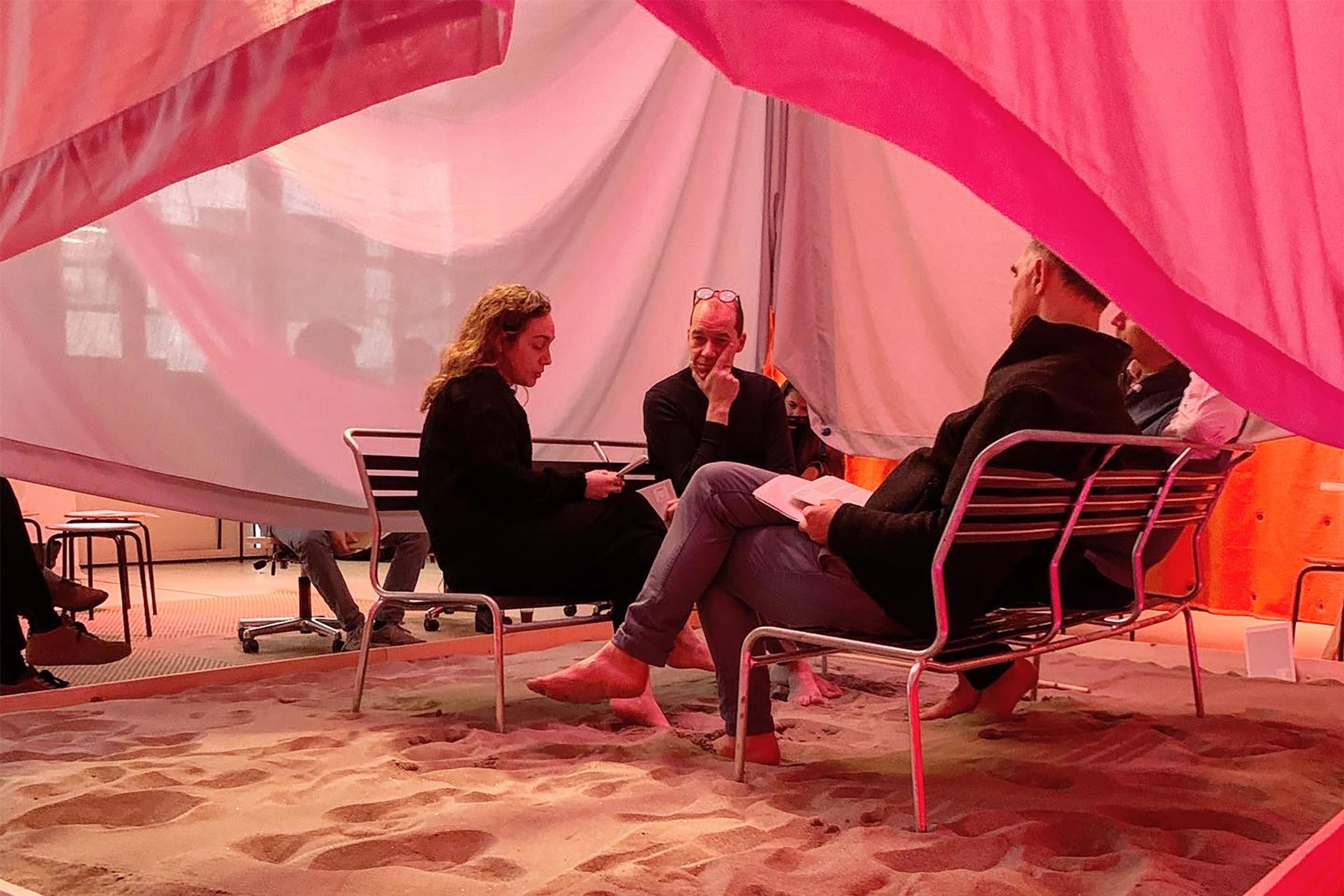The Sandbox
In the context of our Schaerbeek (Trans-)Formation design studio we introduced a sandbox - or sandpit - in our space. The Sandbox consisted of a large wooden frame filled with recycled sand. It was a playful expression of our Design in Dialogue philosophy, and provided an informal stage for playful interaction and discussion. At the same time, served as a metaphor for the site of Schaerbeek Formation, an undeveloped piece of land in the middle of Brussels.
Using the sandbox as a collective and room-sized sketchbook we explored this site as a place of potentials, and as a blank canvas, where students and stakeholders could project their ideas on. By modifying the sand with our hands, and with the help of only a few simple tools - such as sticks for drawing and a rake to level the sand - the sandbox became a field of possibilities. It took on a variety of forms and functions, from a surface to sketch and shareideas and draw connections to a stage for barefoot presentations and sound recordings.
Re-installment of sandbox in Brussels
The sanbox was re-installed at the 1.5 project space in the CCN building, next to the Brussels North train. 1.5 was set up by LabNorth, an open network of organisations involved in the Brussels North District including 51N4E. From September 2020 till July 2021 1.5 is experimenting with temporary occupation and different event types. The space of 500 m² wants to serve as a connecting, meeting space for all these different users and at the same time incubate urban functions that are currently missing in this area.
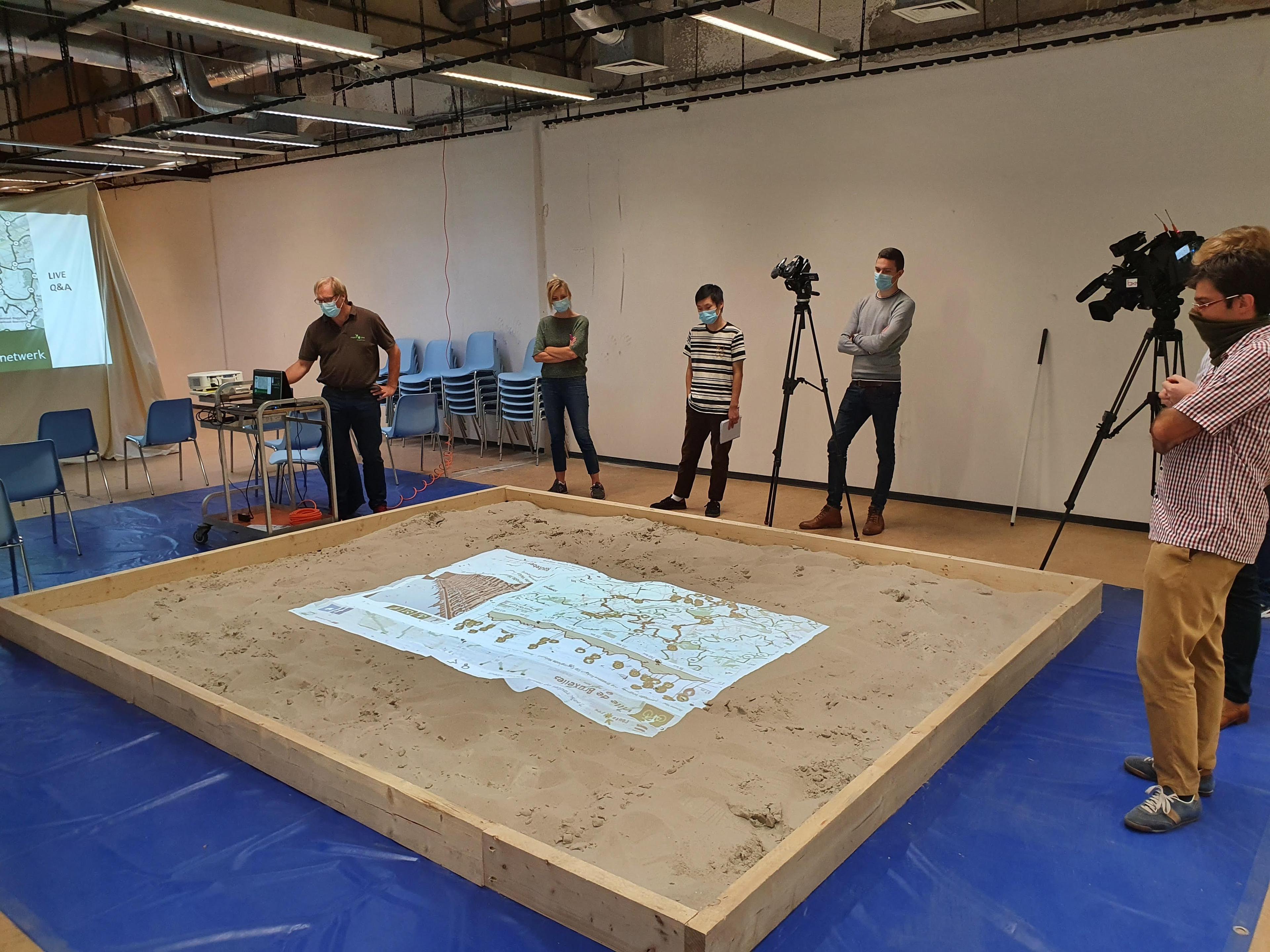
Re-installment of sandbox in 1.5 project space in Brussels.
Inspiration
The idea for the sandbox was partly inspired by ‘Draw a Line’, in interactive installation from 2000 by artist Jeanne van Heewsijk. In collaboration with Rolf Engelen, she filled an area in a gallery space with 25 square meters of soil. Based on an old Dutch territorial game, and referencing the Dutch tradition of land reclamation, the installation was a reworking of the traditional Dutch game of ‘landjepik’ (‘land grab’), which centers on gaining and losing territory, land and space. The game brought together competition and competence, and participants are invited to lay bare their deepest motives at the most basic level.
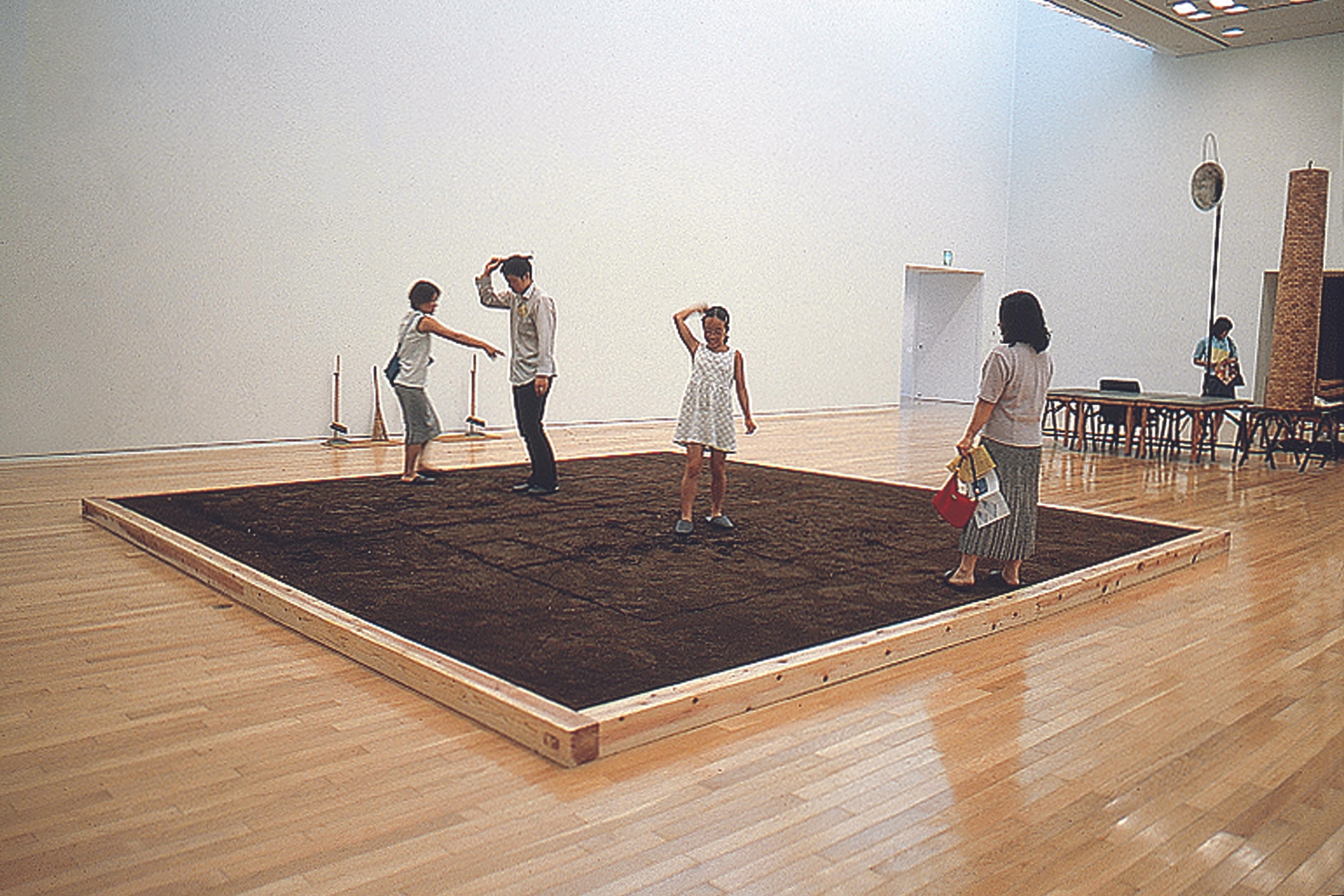
Jeanne van Heeswijk, Draw a line, Tokyo Opera City Art Gallery, Tokyo, 2000 (Image: Jeanne van Heeswijk, Rolf Engelen)
Historically sand gardens were the first designated spaces for children to play in public. The 19th century “sand gardens” were an offshoot of Friedrich Froebel's work on kindergartens. According to architecture and design critic Alexandra Lang, the sandbox has ever since been “a place for children—and ideas—to flourish”. And “even as the number of real sandboxes dwindles, the word sandbox proliferates, applied to any bounded environment that offers freedom to explore and construct, to smash and build, smash and build again.” Many architects, most notably Aldo van Eyck, have incorporated sandboxes in their designs for playgrounds and school yards, creating non-hierarchical environments for people to play. (here more about the “Intellectual History about the Sandbox”)

Aldo van Eyck, Playground, Zeedijk, Amsterdam (Image: Aldo van Eyck Archive / Amsterdam City Archive; Source: Yalebooks)
In game design, the term ‘sandbox’ is used to describe games that incorporate elements that encourage free play, compared to games with more fully formed content. Sandbox design can either describe a game or a game mode, with an emphasis on free-form gameplay, relaxed rules, and minimal goals. Minecraft is one of the most successful examples of a sandbox game. In general sandbox games have the ability to interact socially and share user-generated content across the Internet. Within the field of software development the word ‘sandbox’ is used in the same vein to refer to a testing environment that isolates untested code changes and outright experimentation from the production environment.
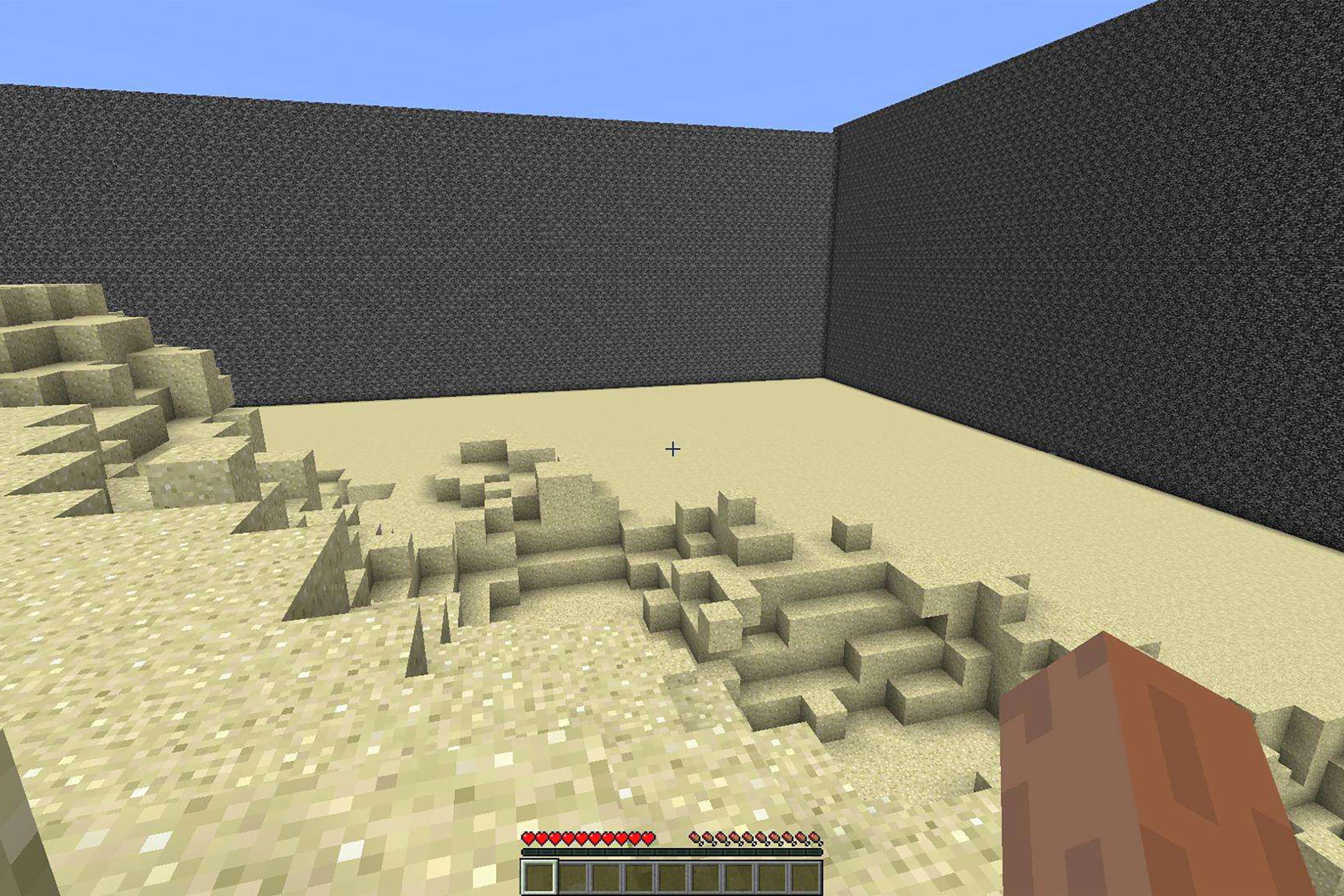
Sandbox in Minecraft

